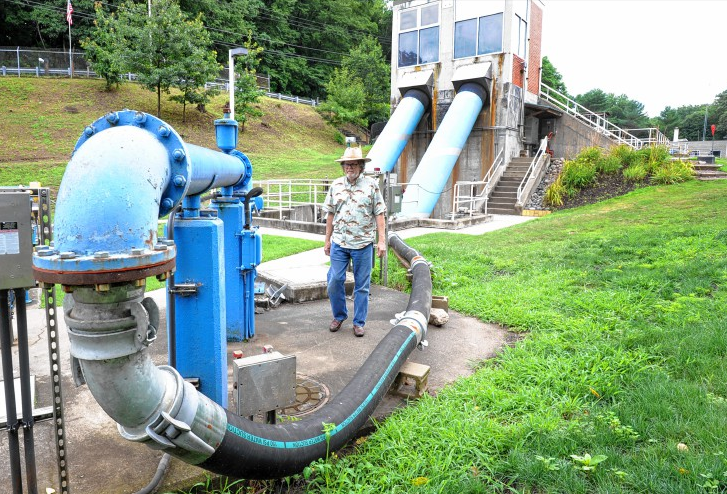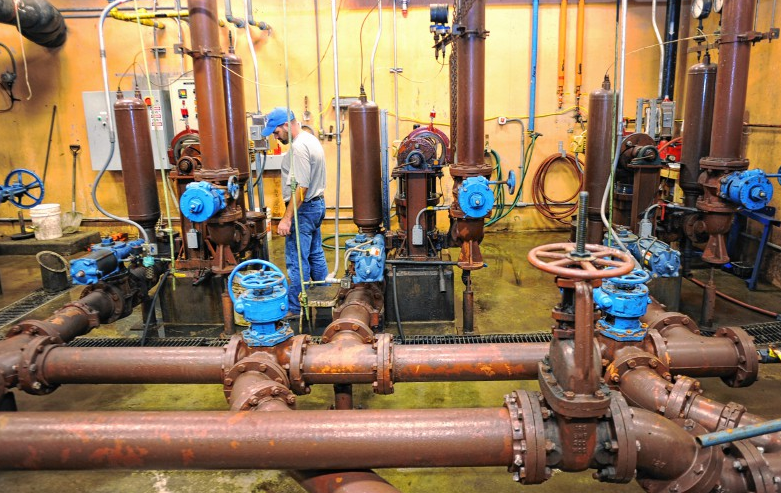Bacteria Eat Waste and Save Money in WWTP
Published on by Water Network Research, Official research team of The Water Network in Technology
Wastewater treatment-plant at Montague uses bacteria to treat the sewage and save expences on high cost technology.
The “bugs” eat the waste from the wastewater and while they’re at it, they reduce a good share of Montague’s wastewater treatment plant expenses as well.
The plant’s unique system of getting rid of its sludge has worked so well, in fact, that 24 sewage plants around the region have been sharing in the savings, too. At least until recently.
 “It’s truly unique,” says Grant Weaver, the plant’s interim superintendent.
“It’s truly unique,” says Grant Weaver, the plant’s interim superintendent.
“Nobody in a small town probably anywhere in the world would think their town would be on the cutting edge. But in this weird niche, Montague is.”
That “niche” is in training its treatment-plant bacteria to feed not only on sewage, but the residue sludge as well. It’s an idea spawned by a visit to Germany by plant operator John Little about six years ago.
While there, he visited a sewage treatment plant on a military base, and started thinking about ways to make the bacteria adapt by cutting down on their oxygen.
He began tinkering with the operation in Montague and gradually got the plant working so that instead of shipping its sludge byproduct offsite to be incinerated, at annual costs of up to $350,000, its bacteria were able to essentially make it disappear.
“It’s just amazing. Unbelievable. We let nature do its job,” said Little. “I thought it was nonsense to do what we were doing. Over the last three years, we haven’t shipped anything out. And we started getting better and better at it.
”So good, in fact, that 26 wastewater plants around the county began sending their sludge to the little treatment plant that could. “This plant, instead of trucking out waste sludge and paying out something in the order of a quarter of a million dollars a year to run the equipment, and taking it to other places, stopped that and started generating revenue on order of a half-million dollars by trucking it in from other towns,” says Weaver.
“That was great for Montague, but even more significantly … pretty much every other wastewater treatment plant was bringing its waste sludge here, saving huge transportation expenses” instead of paying to haul it to one of the half-dozen incinerators in places like Millbury, or Cranston or Woonsocket, R.I. “It cut their costs in half because of transportation.”
 The Greenfield Road plant, which runs at only about half its capacity of 1.8 million gallons of liquid waste a year, runs at maybe five times the concentration of bacteria as a typical plant, according to Weaver.
The Greenfield Road plant, which runs at only about half its capacity of 1.8 million gallons of liquid waste a year, runs at maybe five times the concentration of bacteria as a typical plant, according to Weaver.
Also, dumping sludge into the front end of its system, the plant continually moves waste through various tanks: “a highly oxygenated zone … and zones with zero oxygen, anaerobic zones,” he explains.
“By doing that, we’ve created an environment that’s proven it can break down the sludge, to everybody’s benefit. It’s evolved over five years, and in the last three years, it’s gotten to a really good point.”
Weaver, who’s worked on and off as a Connecticut-based consultant to Montague for the past five years, added, “There’s nobody in the country, nobody in the world that we know of, that’s doing this, that trucks in other people’s sludge, dumps it in the liquid stream and doesn’t truck anything out. There are perhaps a dozen in the country we know of that hardly ever truck sludge out of their facilities.”
While Montague has not been shipping out its own plant’s sludge, in May it turned off the program of accepting sludge from other plants, to the frustration of neighboring towns, which Abbondanzio said are in “a desperate situation.”
That’s doubled sludge hauling costs for surrounding towns, according to Jan Ameen, executive director of the Franklin County Solid Waste District, which contracts for many of those towns. “Montague was the regional solution for about four years,” she said.
Source: Going Green
Media
Taxonomy
- Waste Water Treatments
- Water & Wastewater
- Water & Wastewater
2 Comments
-
Amazing indeed. However, my question to this amazing concept would be, after the bugs have fed on the sludge or solids they have to excrete or waste something from their cells, where do the wastes go to? everporate?
-
very strange story, trully is magic!
I Wonder what happened that made this story go to an end as per May 2016??
3 Comment replies
-
Dirk Seghers Mark Steelman good points. we will see what we can do to find out. stay tuned
-
Vishakha Rajput see if we can find out what happened, why they stopped...
-
Exactly what I was wondering. Seems strange to me if the program was working so great then why stop it.
-